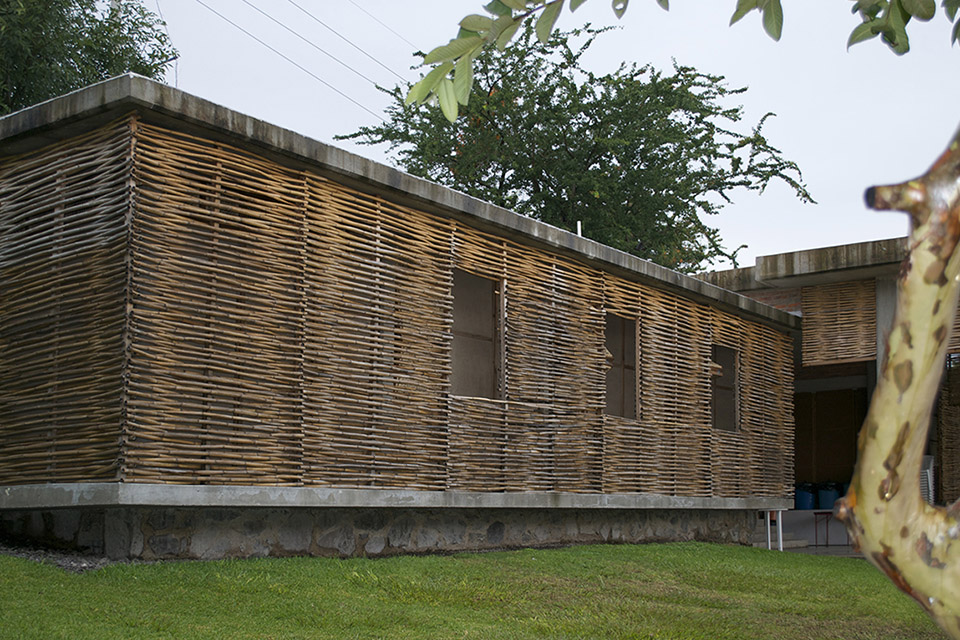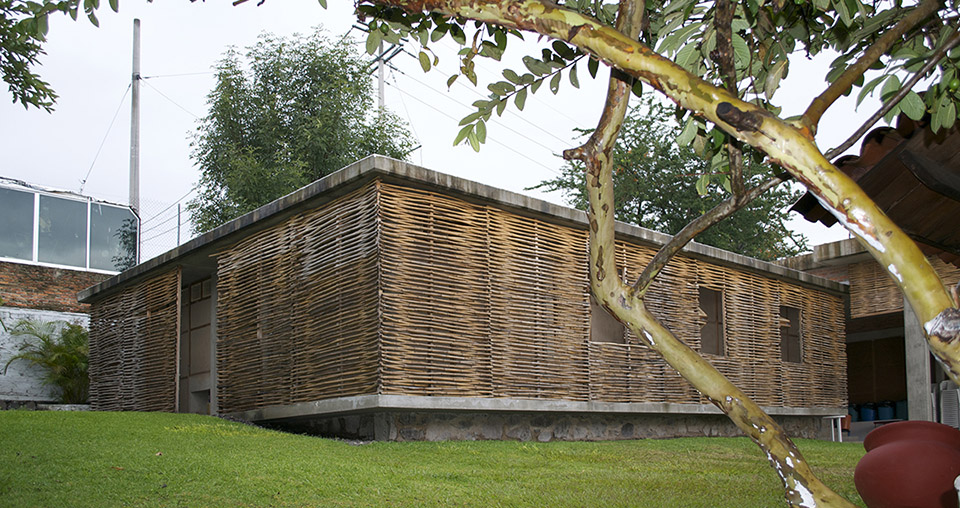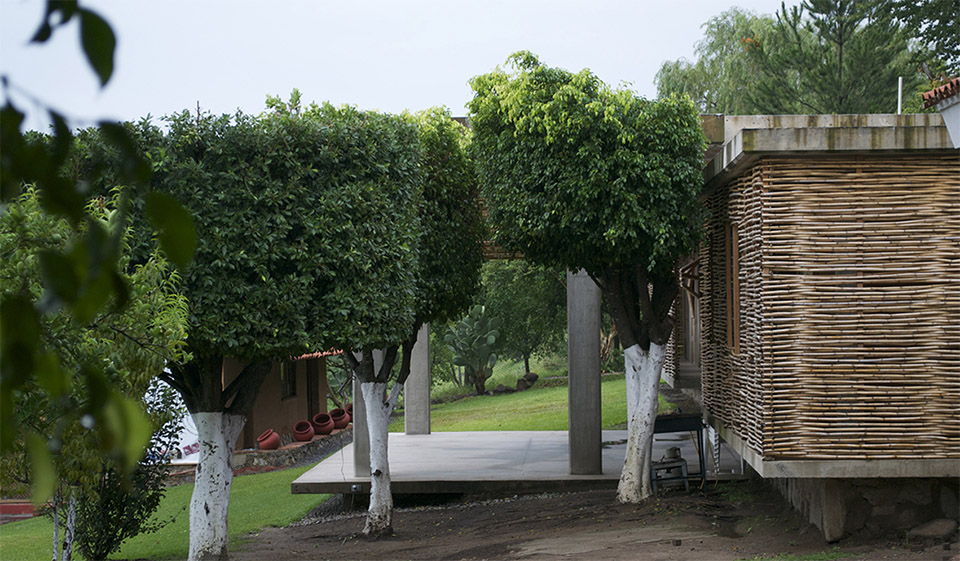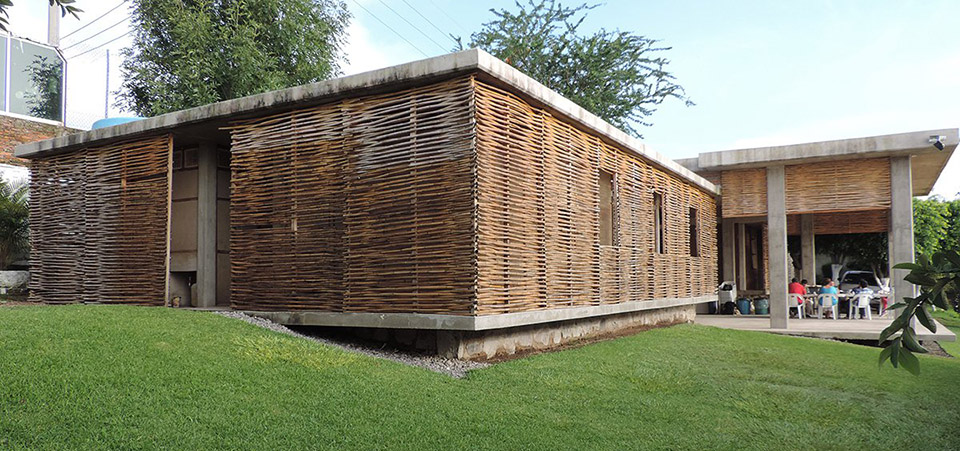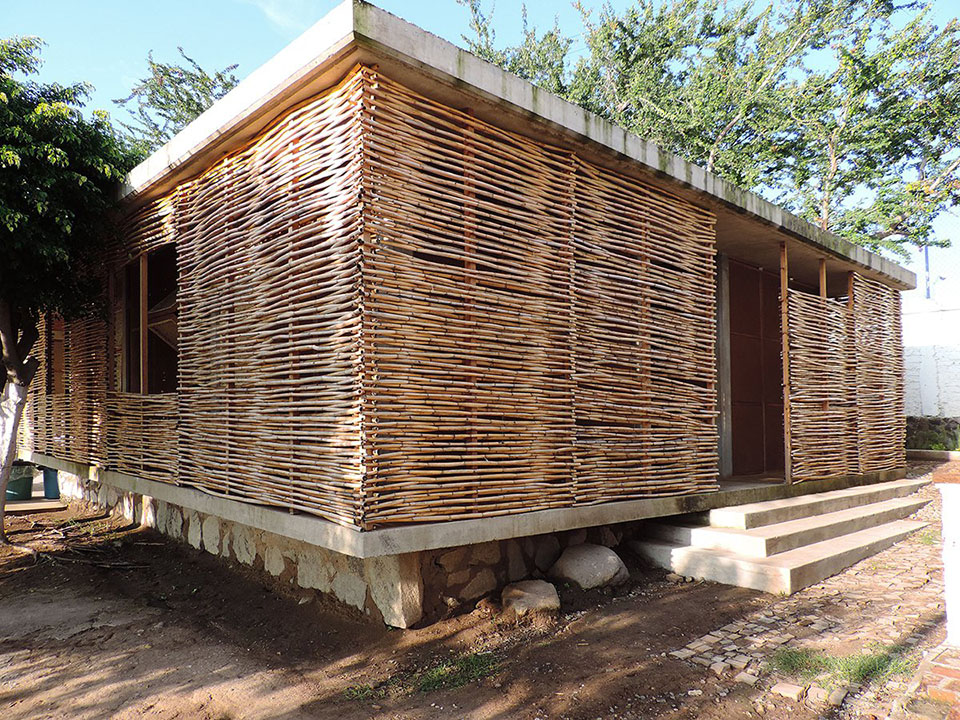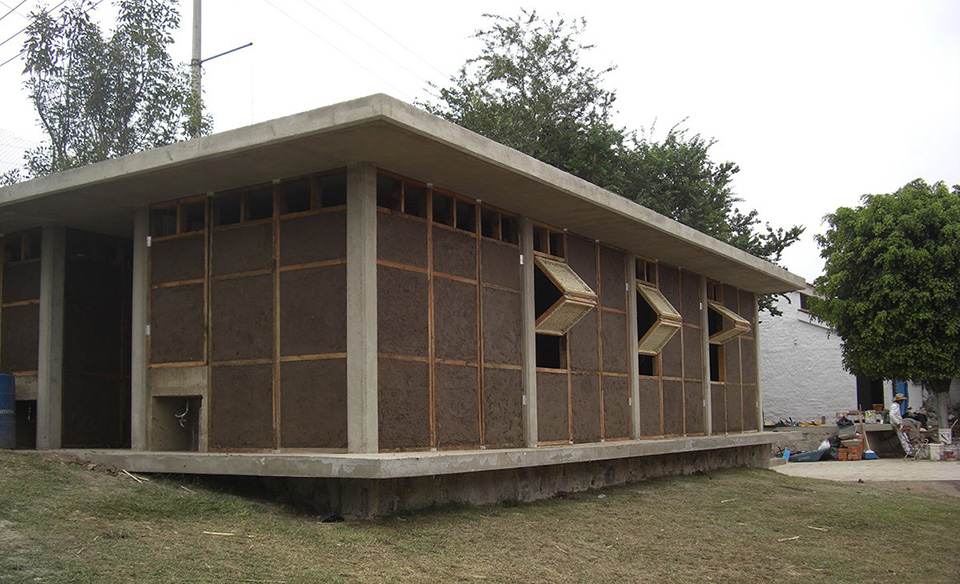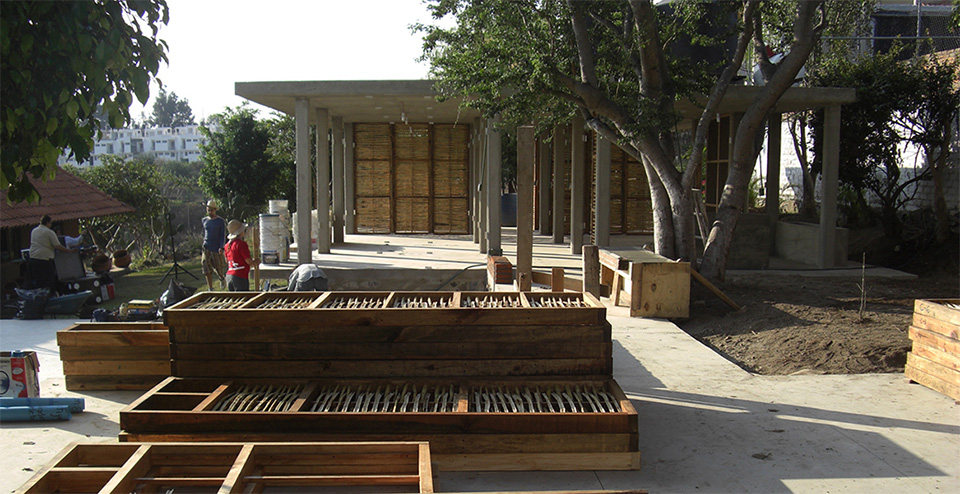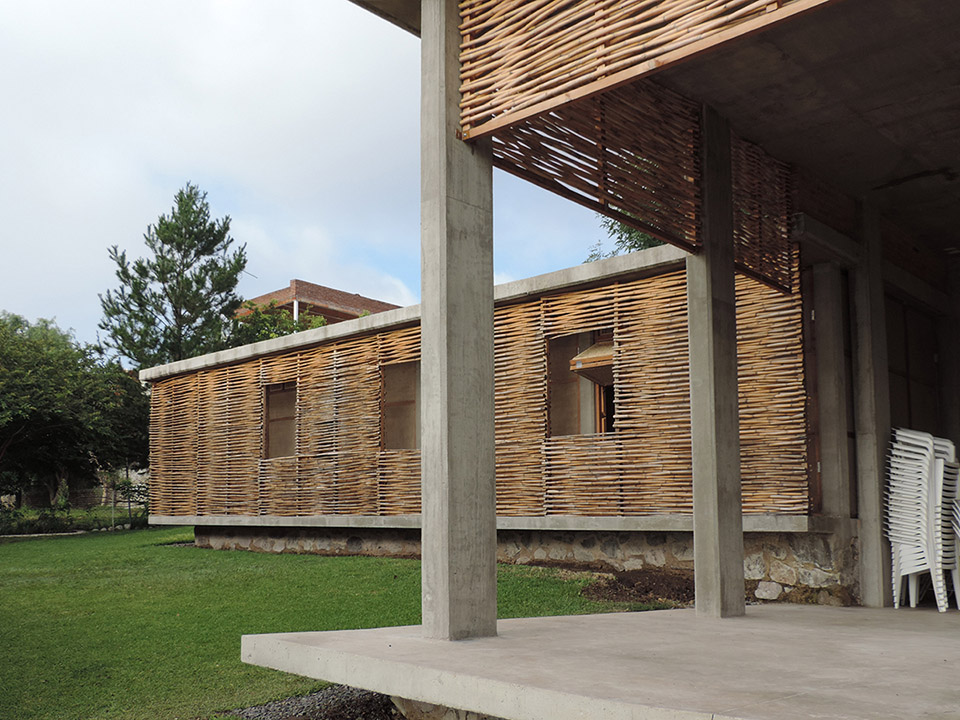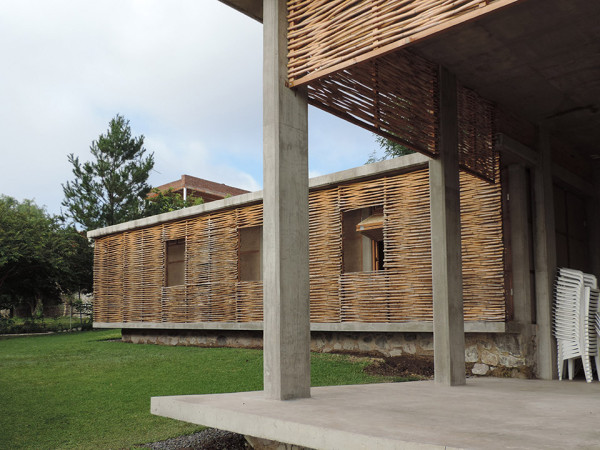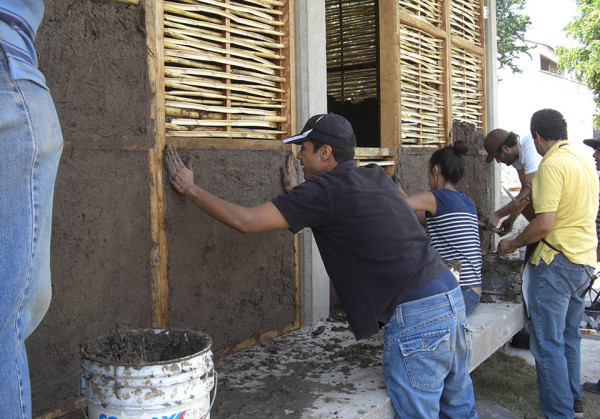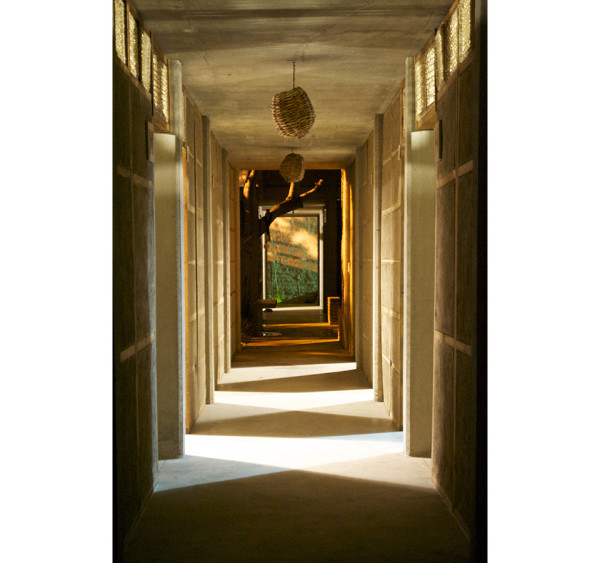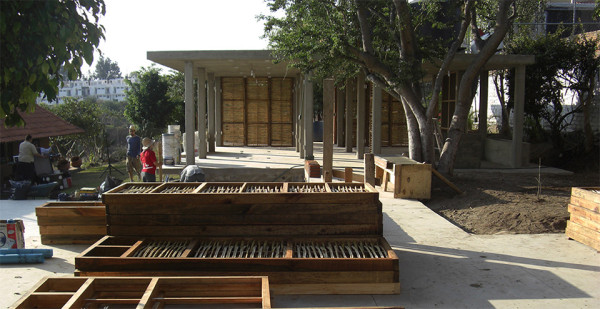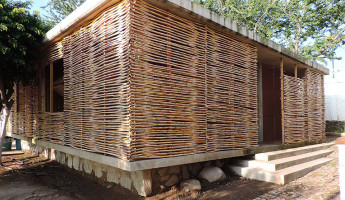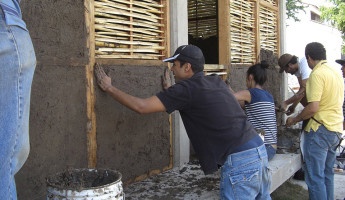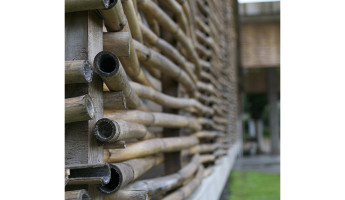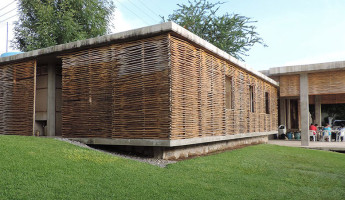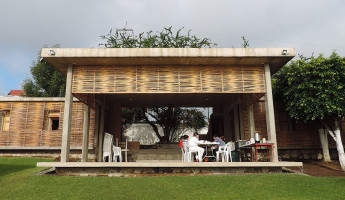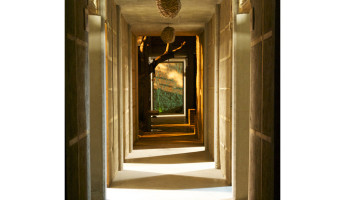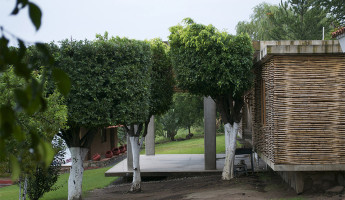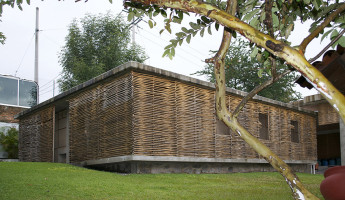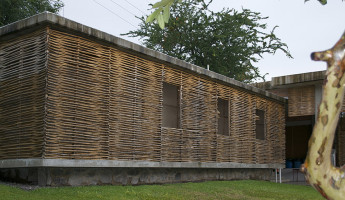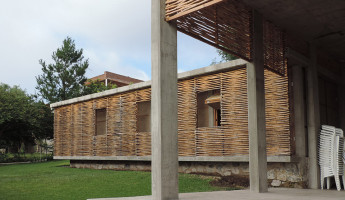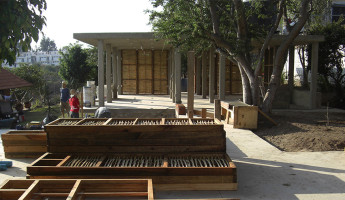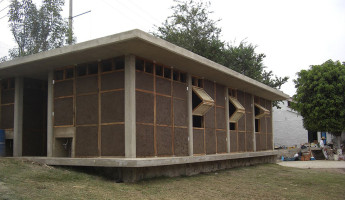The Mexico Institute for Community Development isn’t the first to crowd-source an architectural project. In fact, this is an ancient building method shared by most world cultures. From Amish barn-raising to modern Habitat for Humanity, volunteer-built structures is a common tradition. This building for the IMDEC is the latest in this style, a collaboration between volunteers and architects who conceived this design. The building started as a reinforced concrete frame that stood empty on its Guadalajara plot. A group of 100 volunteers came together and used mud and reeds to build exterior and interior walls throughout the concrete frame. The mud acts as a insulation, occupying most of the wall space between the concrete beams. The interwoven reeds act as a visual facade, giving the building a natural character while allowing the light to filter through to interior spaces. This is the same technique used thousands of years earlier by natives in the region, and it’s been used again in concert with the sharp modern design of the concrete frame. Thanks to the work of the volunteers on this crowd-sourced architecture project, labor costs were kept to a minimum. Since the walls were built with naturally-sourced materials, the only hard cost of the structure was the reinforced concrete frame. It’s an excellent example of how old techniques and old material inspiration can be used to create modern spaces to serve a purpose. The Mexico Institute for Community Development is open now in Guadalajara, and those interested in crowd-sourced architecture would certainly be welcomed to visit. Your hands could build the next IMDEC project.
Crowd-Sourced Architecture for Mexican Institute for Community Development | Gallery
